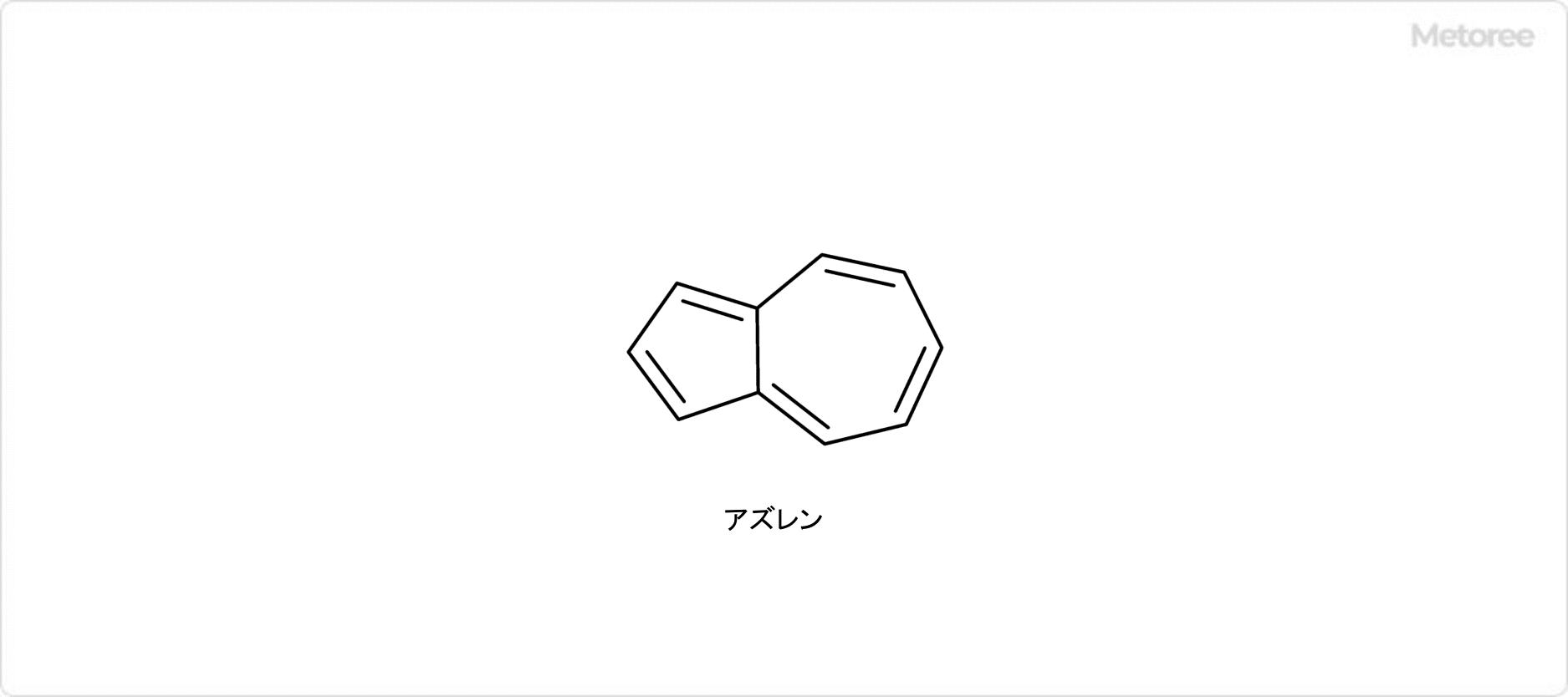What Is Azulene?
 Azulene is a polycyclic aromatic hydrocarbon composed entirely of carbon and hydrogen atoms. Azulene is also the generic name for compounds that have an azulene skeleton.
Azulene is a polycyclic aromatic hydrocarbon composed entirely of carbon and hydrogen atoms. Azulene is also the generic name for compounds that have an azulene skeleton.
Azulene is a nonbenzene aromatic compound without a benzene ring. It is a structural isomer of naphthalene and has a fused structure of 5- and 7-membered rings. It is a natural organic compound found in plants such as chamomile. The blue color, which is unusual for a hydrocarbon compound, was named “azulene” from the Spanish word “azul,” meaning blue, because of this characteristic color.
Uses of Azulene
Azulene is mainly used in pharmaceuticals, cosmetics, and as an organic synthetic material due to its mild anti-inflammatory properties. It is used in gargles, medicines to reduce inflammation of the nose and throat, and drugs for gastritis and stomach ulcers.
Another azulene derivative, guaiazulene (azulone, 1,4-dimethyl-7-isopropylazulene), is used in ointments to reduce skin inflammation, cosmetics, and other daily products that come in direct contact with the skin.
Azulene is the main component of essential oils such as chamomile and chamomile. These herbs have been used as folk medicines since ancient times. Their efficacy is attributed to the anti-inflammatory properties of azulene contained in the herbs. Even today, many products use chamomile or chamomile essential oil as an ingredient in medicated bath salts and cosmetics to reduce skin inflammation, and these products can also be considered as azulene-containing daily necessities.
Properties of Azulene
| Chemical formula | C10H8 |
| English name | Azulene |
| CAS No. | 275-51-4 |
| Molecular weight | 128.17g/mol |
| Melting points | 100°C |
| Boiling point or first distillation point and boiling range | 242°C |
1. Azulene Aliases
Other names for azulene include bicyclo[5.3.0]decapentaene and cyclopentacycloheptene.
2. Solubility of Azulene
Azulene is soluble in ethanol and acetone.
Since water solubility is important for pharmaceutical use, a water-soluble azulene derivative, sodium azulene sulfonate hydrate, is often used in pharmaceutical applications.
Other Information on Azulene
1. Hazardous Properties of Azulene
Azulene is an ingredient used in pharmaceuticals and daily necessities and is not hazardous to the human body. Therefore, there is no information on azulene in the Safety Data Sheet (SDS) for chemical compounds.
2. Azulene Safety Precautionary Information
Azulene is an organic compound that is harmless to the human body, so no special safety precautions are required when handling it.
3. Other precautions
Azulene is a solid organic compound with sublimation properties. When mixtures of azulene and other organic compounds or solvents are distilled or concentrated under reduced pressure, azulene may be mixed with organic compounds or solvents with low boiling points due to azulene’s sublimability. Handle and store the azulene with the sublimability of the compound in mind.
4. Disposal method
There are no legal restrictions on how to dispose of azulene. However, since azulene is often handled as a laboratory reagent or medical raw material, it should be disposed of properly by requesting a specialized waste disposal company.